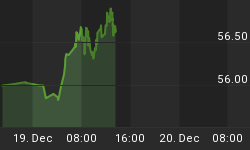Commodities are rising, the dollar is falling and the trade deficit is growing. Everything bad is good again, thanks to the Feds.
All of the pernicious factors that brought us to the brink of financial Armageddon are now once again returning and are still -- amazingly enough--being embraced as both normal and healthy for the long term viability of the U.S. economy. Factors such as a strengthening U.S. dollar, shrinking trade deficit, a surging savings rate and falling commodity prices were all being viewed as the bane of the U.S. economy. And now, unfortunately, what had been the budding re-emergence of economic sanity is being obliterated by a killing frost thanks to the Fed and the Administration.
Despite whatever comes from their mouths, the most important goal of this government is to stop the slide in the stock and real estate markets. The major averages have rallied since their March lows because of the massive deficit spending and liquidity provided by our government. But the costs of providing market increases that are based solely on inflation are pyrrhic in nature.
The US dollar index hit a cyclical high of just over 89 in early March while the S&P 500 reached its cyclical bottom of 676.53 on March 9th. Today we find the S&P trading above 900 while the dollar has fallen below 83. This is a direct result of our government's incorrect viewpoint that a strengthening US dollar is bad for trade and the economy. But the truth is that a strong currency is the backbone of a healthy economy and is essential for providing price stability and low interest rates.
As a direct result of this recession and the insipient desire on the part of the US consumer to save, we have seen the trade deficit cut in half over the past year. But right on cue, the trade gap in March rose for the first time in eight months to $27.6 billion from the February low print of $ 26.1 billion. Again, this is all part of the government's plan to eschew savings and encourage consumption; its borrow-and-spend mantra of the past is being viewed as the panacea for the economy. In reality, savings provides the capital for investment and which leads to innovation and productivity increases -- the only true method of growth.
And continuing with this theme of reflation, the Reuters Jefferies CRB Index made a triple bottom on March 3rd at 200. Today, the nineteen commodities in the index are trading at 242 -- a 21% increase. How can the money printing policies of the Fed, which have caused the increase in energy and materials, be viewed as helpful for the consumer? Can oil priced at $58 a barrel be considered cheap and a sign of deflation? Does $920 for an ounce of gold presage the strengthening purchasing power of our currency?
The preceding data is not at all coincidental. There can be no mistake, the Administration and Fed are succeeding in their desire to re-inflate the bubble and have dragged us further away from what was the beginning of true and lasting healing in the U.S. economy.
It is true a rising dollar, increased savings and deflating asset prices are all painful in the short term for the economy and the consumer. But they are essential for the healing process of deleveraging to occur. By not allowing the process to consummate, the government is ensuring that when -- not if -- inflation returns, it will be impossible to vanquish without severely harming our already vulnerable economy.
*Tired of paying fees while your account value plummets? Learn about our new performance-based pricing.
Be sure to listen in on my Mid-Week Reality Check
Follow me on Twitter: http://twitter.com/michaelpento















